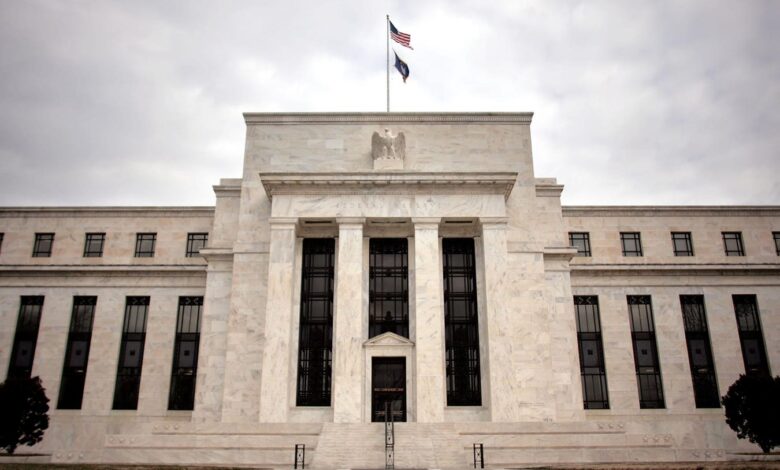Wrecking The Fed Is ‘Tariff Man’ Trump’s Worst Economic Idea Yet

📝 usncan Note: Wrecking The Fed Is ‘Tariff Man’ Trump’s Worst Economic Idea Yet
Disclaimer: This content has been prepared based on currently trending topics to increase your awareness.
The Federal Reserve building in Washington, DC.
Chip Somodevilla/Getty Images
In international circles, the Federal Reserve is the most respected U.S. institution. Here in Asia, investors often pay more attention to what the Fed does in Washington than to their local central banks.
So, it boggles the mind why President Donald Trump would torch an entity at the very center of America’s financial influence. Yet, that’s precisely what Trump is doing as he tries to fire Fed Governor Lisa Cook in addition to angling to sack Chair Jerome Powell.
Team Trump is also looking for ways to exert power over the 12 regional Fed banks. Including, presumably, giving Trump scope to appoint their presidents. At present, private-sector boards have a big say in who runs the regional banks.
No one thinks the 112-year-old Fed system is ideal. Despite the Fed’s dual mandate of achieving full employment and price stability, mistakes will inevitably occur. In 1994, for example, the Fed embarked on an aggressive 12-month tightening cycle that sent shockwaves everywhere.
By doubling rates in just a year’s time, the Fed, led by Chair Alan Greenspan, tipped Mexico into crisis, helped bankrupt Orange County, California, and shuttered Wall Street bond giant Kidder, Peabody & Co. The dollar’s multi-year rally precipitated the 1997 Asian financial crisis.
Yet if Trump doesn’t understand the “exorbitant privilege” that Washington enjoys — and why the U.S. wants to preserve it — perhaps Scott Bessent can school him. As a former hedge fund guy, Treasury Secretary Bessent surely knows what 1960s French Finance Minister Valéry Giscard d’Estaing meant when he coined the phrase.
Because the U.S. is the biggest economy and home to the reserve currency, the government can live beyond its means like no other nation. It can borrow at lower rates than it otherwise could. And the dollar enjoys safe-haven buying when anything, anywhere, goes awry.
This status explains why Moody’s Investors Service yanking away Washington’s last AAA rating in May didn’t tank the dollar. Nor did U.S. Treasury yields skyrocket. Exorbitant privilege, indeed.
The Fed is the glue holding everything together. Economists can debate whether the Fed should save markets in times of strain with strategically timed rate cuts. What started as the “Greenspan put” in the 1990s created a practice that Fed leaders have preserved since then.
The risk is that Trump morphs the Fed into an institution that’s all “put” and no sobriety. It was 1950s Chair William McChesney Martin who famously said that the Fed’s job is to yank away the punchbowl just as the party is getting going.
Much has been made of “Argentinaization” risks emanating from Trump firing the head of the Bureau of Labor Statistics because data showed employment slowing. Trump neutering the Fed’s independence could set the stage for a disastrous surge in inflation.
The damage from this gambit would be hard to reverse. Trump’s tariffs can be undone. His efforts to pull America out of the renewable energy race and withdraw Detroit from the electric vehicle market can be reversed. His budget-busting tax cuts can be repealed. However, restoring trust in the Fed will be much more challenging to achieve.
Asia is directly on the frontlines of this risk. It’s as dollarized and export-driven as any region. As Trump’s assault on Fed autonomy undermines the dollar and boosts U.S. Treasury yields, global markets will become more volatile and less predictable.
“If the president were successful, the outcome would be momentous,” says Michael Feroli, chief U.S. economist at J.P. Morgan. He adds that “this would add to upside inflation risks.”
And add to Asia’s worries that 2026 could be much worse than 2025.



